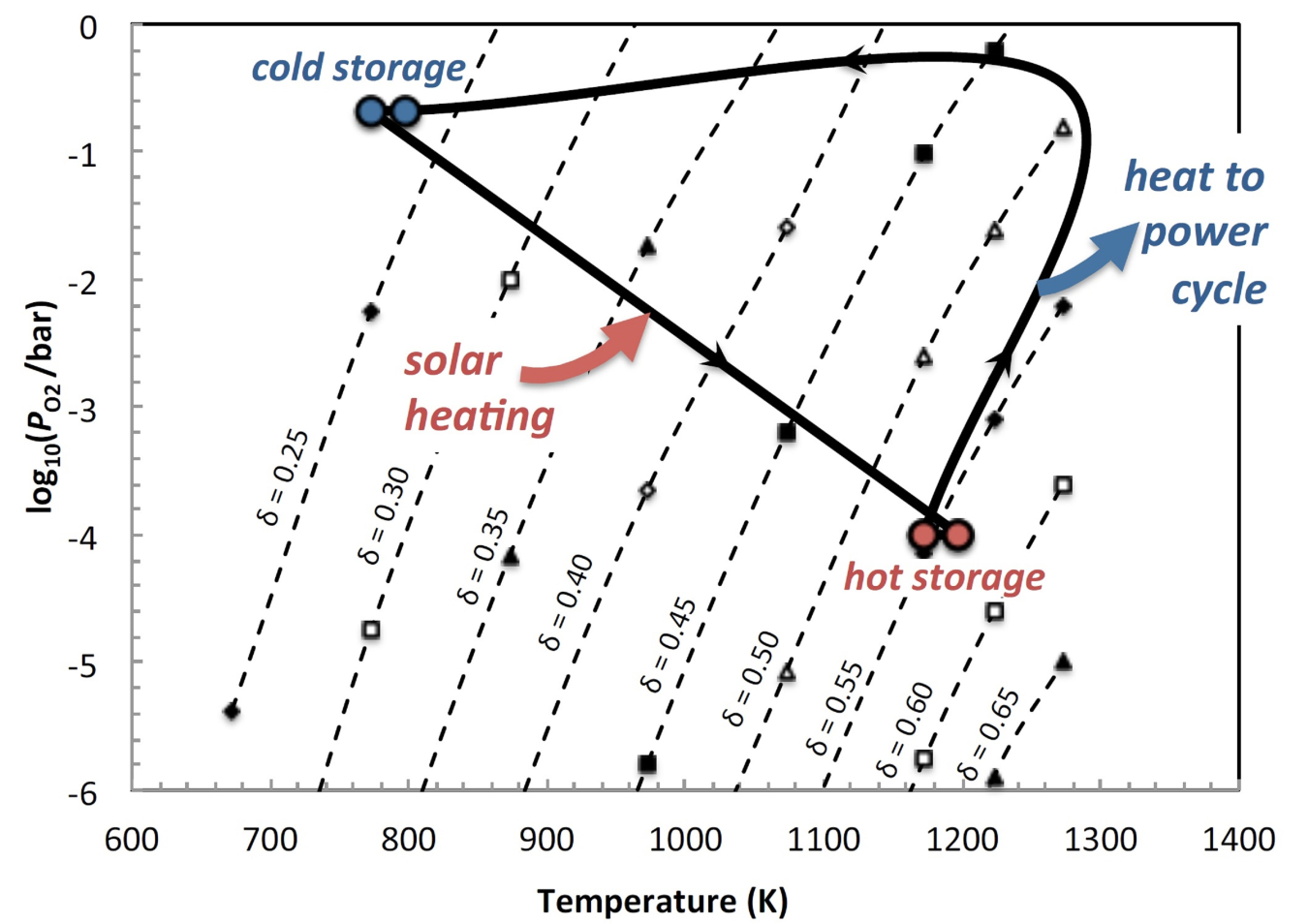-- This project is inactive --
Colorado School of Mines (CSM), through the Concentrating Solar Power: Efficiently Leveraging Equilibrium Mechanisms for Engineering New Thermochemical Storage (CSP: ELEMENTS) funding program, is exploring the techno-economic feasibility of redox cycles with low-cost, perovskite oxides for high-temperature thermochemical energy storage (TCES) in a concentrating solar plant. Perovskites can undergo endothermic reduction to store energy at temperatures as high as 900°C. The stored energy can be released by exothermic re-oxidation in a fluidized bed to provide high-temperature heat exchange above the storage temperature to drive high-efficiency power cycles, such as super-critical CO2.
Approach
The research effort accomplishes the following objectives:
- Develop and experimentally validate thermokinetic and spectroscopic models of selected perovskites (based on cost, reducibility, and durability) using tools available at CSM
- Integrate material models into the National Renewable Energy Laboratory's (NREL) CFD design models for particle receiver and TCES
- Analyze full cycle performance with perovskite receiver and TCES and provide techno-economic analysis of optimal CSP plant with perovskite-based TCES
- Design and assemble a sub-scale (5-10 kWt) prototype particle receiver in NREL's solar furnace and update TCES subsystem model to show pathway to 75+% exergetic efficiency
This project builds on advances in particle receiver designs at NREL and the respective expertise at CSM and Abengoa on redox-stable materials characterization and system process design and techno-economic evaluation.
Innovation
Alternative low cost perovskite materials will be explored and selected based on TCES capacity, redox stability, rapid kinetics, and costs as determined by experimental characterization and model development at CSM. Material models will be integrated into NREL's particle receiver and fluidized-bed models and Abengoa's techno-economic models to assess tradeoffs between increased reduction at high temperatures and improved receiver efficiency at lower temperatures. Finally, a sub-scale (5-10 kWt) particle receiver reactor device will be designed and tested at NREL's solar furnace in conjunction with a re-oxidation reactor to validate models and provide a basis for commercialization with a pathway to CSP having a levelized cost of electricity at 6¢/kWh.
Perovskites held in 'cold storage' (~750K) are subjected to solar heating which charges the thermochemical energy storage system by driving off a quantity of oxygen, represented by the sigma value. Once charged, the system can be held in 'hot storage' for later use. When the sun does not shine the system is discharged through the reintroduction of oxygen and the stored solar energy is provided as heat to power cycle returning the perovskite to its 'cold storage' state.
Learn about other concentrating solar power research.

